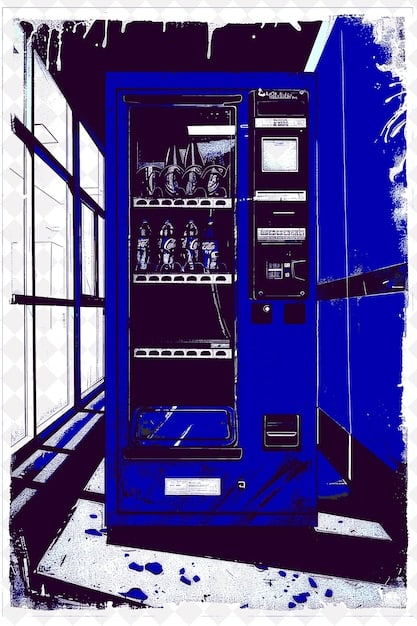Web3 News Platforms: Monetization Models for the Next 2 Years

Web3 news platforms are poised to experience a revolution in monetization, moving beyond traditional advertising towards innovative models like tokenization, NFTs, decentralized autonomous organizations (DAOs), and microtransactions, offering users greater control and new revenue streams for creators within the next two years.
The world of news is changing, and Web3 news platforms: What New Monetization Models Will Emerge in the Next 2 Years? are leading the charge. Imagine a news ecosystem where you, the reader, can directly support the journalists and publications you trust. This is the promise of Web3, and it’s closer than you think.
The Evolution of News Consumption in the Web3 Era
News consumption is undergoing a massive shift, driven by technological advancements and changing user expectations. The transition from traditional media to digital platforms has been significant, and the emergence of Web3 technologies promises to shake things up even further. This evolution requires news platforms to adapt and explore new ways to generate revenue and sustain their operations.
From Print to Pixels: A Digital Transformation
The shift from print media to online news platforms was a pivotal moment in the history of journalism. Newspapers and magazines had to adapt to the digital realm to maintain their relevance and reach a wider audience. This transition introduced new challenges, including the need to monetize digital content and compete with a growing number of online news sources.
The Rise of Social Media and Content Aggregation
Social media platforms have become dominant players in news consumption, with many users relying on these platforms to stay informed. However, this trend has also raised concerns about the spread of misinformation, filter bubbles, and the erosion of trust in traditional news sources. Content aggregation platforms, while convenient, often lack proper attribution and revenue sharing with the original content creators.

Web3 technologies offer a potential solution to many of these challenges by providing a decentralized and transparent infrastructure for news distribution and monetization. This approach could empower both journalists and consumers, fostering a more sustainable and trustworthy news ecosystem.
Several key aspects are reshaping the way news is accessed and monetized:
- Decentralization, promoting more democratic control over content.
- Tokenization, offering new ways to reward content creators and engage audiences.
- Transparency, enhancing trust through verifiable information and data provenance.
These elements are essential for building a news ecosystem that’s fair, sustainable, and resistant to censorship.
In conclusion, the evolution of news consumption in the Web3 era represents a shift towards greater transparency, decentralization, and user empowerment. As news platforms embrace these new technologies, they can create innovative monetization models that benefit both content creators and consumers alike.
Understanding Web3: The Foundation for New Monetization
To fully grasp the potential impact of Web3 on news platforms, it’s essential to understand the fundamental principles and technologies that underpin this emerging paradigm. Web3, often referred to as the decentralized web, is built on blockchain technology, which enables secure, transparent, and peer-to-peer interactions without the need for intermediaries.
Blockchain Technology and Decentralization
Blockchain technology is at the heart of Web3, providing a distributed ledger system that records transactions in a tamper-proof manner. This decentralization eliminates the need for central authorities, such as banks or corporations, to validate and control information. In the context of news platforms, blockchain can be used to verify the authenticity of news articles, track their distribution, and enable direct revenue sharing with content creators.
Smart Contracts and Automated Transactions
Smart contracts are self-executing agreements written in code that automatically enforce the terms of a contract when specific conditions are met. In the Web3 news ecosystem, smart contracts can be used to automate payments to journalists based on the number of times their articles are read or shared. They can also facilitate microtransactions, allowing users to pay small amounts to access individual articles or content.
Imagine a system where content creators and consumers connect directly, bypassing traditional gatekeepers:
- Smart contracts ensure transparent and automated payments.
- Tokenization incentivizes participation and content creation.
- Decentralized storage guarantees content availability and integrity.
These components form a robust foundation for new monetization models.
Web3 technologies offer a compelling alternative to the existing centralized model of the internet. By leveraging blockchain, smart contracts, and decentralized storage, news platforms can create a more equitable and sustainable ecosystem for content creation and consumption. This understanding of Web3 is crucial for exploring the potential of new monetization models.
In short, Web3’s decentralized nature and smart contract capabilities pave the way for transparent and automated monetization models in the news industry, eliminating intermediaries and fostering a more direct relationship between creators and consumers.
Emerging Monetization Models for Web3 News Platforms
With a solid understanding of Web3 principles, we can delve into the exciting array of emerging monetization models that are poised to transform the news industry. These models leverage the unique capabilities of Web3 to create new revenue streams for news platforms, empower content creators, and enhance user engagement.
Tokenization and Cryptocurrency Payments
Tokenization involves creating digital tokens that represent ownership or utility within a specific ecosystem. News platforms can issue their own tokens to reward users for contributing content, sharing articles, or participating in community discussions. These tokens can also be used to access premium content, vote on editorial decisions, or receive discounts on subscriptions.
NFTs for Unique News Content and Collectibles
Non-fungible tokens (NFTs) are unique digital assets that represent ownership of a specific item or piece of content. News platforms can create NFTs for exclusive interviews, original artwork, or historical articles. These NFTs can be sold to collectors or used to grant access to special events or content. This model provides a new way to monetize unique and high-value content.

DAOs: Decentralized Autonomous Organizations for News Governance
Decentralized autonomous organizations (DAOs) are community-led entities that use smart contracts to govern their operations. News platforms can create DAOs to allow users to participate in editorial decision-making, content curation, and platform governance. This model empowers users to shape the future of the news platform and aligns their interests with the success of the organization.
The future of Web3 news monetization includes:
- Micropayments that allow users to pay per article.
- Staking rewards for users holding platform tokens.
- Membership tokens that grant exclusive content access.
These models are expected to gain traction in the next two years.
In summary, emerging monetization models for Web3 news platforms offer a diverse range of opportunities for generating revenue, engaging users, and fostering a more sustainable news ecosystem. These models are likely to become increasingly prevalent as Web3 technologies mature and gain wider adoption within the news industry.
Challenges and Opportunities in Web3 News Monetization
While Web3 offers exciting prospects for revolutionizing news monetization, it’s crucial to acknowledge the challenges and opportunities that lie ahead. Navigating these complexities will be essential for Web3 news platforms to succeed and establish themselves as viable alternatives to traditional media models.
Adoption Barriers and User Experience
One of the primary challenges facing Web3 news platforms is the adoption barrier. Many users are unfamiliar with blockchain technology, cryptocurrencies, and other Web3 concepts. Simplifying the user experience and providing clear explanations of how these technologies work will be crucial for attracting a wider audience. Education and user-friendly interfaces are paramount.
Regulatory Uncertainty and Legal Compliance
The regulatory landscape surrounding Web3 technologies is still evolving, and there is considerable uncertainty about how these technologies will be regulated in different jurisdictions. Web3 news platforms must carefully navigate these legal complexities and ensure that they comply with all applicable regulations. Engaging with policymakers and advocating for clear and sensible regulations will be essential.
Key opportunities for Web3 news platforms include:
- Building stronger community engagement through DAOs.
- Creating unique and valuable content through NFTs.
- Establishing transparent and trustworthy news sources.
Overcoming Misinformation and Ensuring Trust
The decentralized nature of Web3 can also present challenges in terms of combating misinformation and ensuring the trustworthiness of news content. Web3 news platforms must implement robust fact-checking mechanisms and content moderation policies to prevent the spread of false or misleading information. Building strong reputations for accuracy and objectivity will be crucial for gaining user trust.
Ultimately, the success of Web3 news monetization hinges on addressing the adoption barriers, navigating the regulatory uncertainties, and establishing trust with users. By embracing these opportunities and overcoming these challenges, Web3 news platforms can unlock the full potential of decentralized technologies and create a more sustainable and equitable news ecosystem.
In conclusion, while the path to widespread adoption of Web3 news monetization models is not without its obstacles, the potential rewards are significant. By addressing the challenges and capitalizing on the opportunities, Web3 news platforms can redefine the future of news consumption and content creation.
Case Studies: Early Adopters of Web3 News Models
Examining real-world examples of platforms currently experimenting with Web3 technologies provides valuable insight into the practical application and impact of these new monetization models. These early adopters showcase the potential of Web3 to transform the news landscape.
Mirror.xyz: A Decentralized Publishing Platform
Mirror.xyz is a decentralized publishing platform that allows writers to publish their work and monetize it directly through cryptocurrency payments and NFTs. Writers on Mirror retain full ownership of their content and can set their own prices, fostering a more equitable relationship between creators and consumers. The platform emphasizes community engagement and rewards users for supporting their favorite writers.
Civil: A Blockchain-Based Newsroom
Civil was an ambitious project that aimed to create a decentralized newsroom governed by its members. While the original project faced challenges, it demonstrated the potential of blockchain to enhance transparency and accountability in journalism. Civil utilized its own cryptocurrency, CVL, to reward journalists for producing high-quality content and to incentivize community participation.
Success stories highlight:
- Increased creator revenue through NFTs.
- Stronger community bonds built via token rewards.
- Transparency in journalistic practices facilitated by blockchain.
Other Notable Initiatives
Beyond these prominent examples, several other initiatives are exploring the use of Web3 technologies in news and media. These include platforms that utilize microtransactions to pay journalists for individual articles, decentralized social networks that reward users for sharing news content, and projects that use blockchain to verify the authenticity of news sources.
As the Web3 ecosystem continues to evolve, it’s likely that we’ll see even more innovative and impactful applications of these technologies in the news industry. These early adopters provide a glimpse into the future of news monetization and offer valuable lessons for those looking to build the next generation of Web3 news platforms.
In brief, these case studies exemplify the potential of Web3 technologies to create new revenue streams, empower content creators, and enhance user engagement within the news industry, paving the way for a more sustainable and equitable ecosystem.
Predictions and Future Trends in Web3 News
Looking ahead, several key trends and predictions can help us anticipate the future of Web3 news platforms and their monetization models. These trends reflect the ongoing evolution of Web3 technologies and their increasing integration with the news industry.
Increased Adoption of Tokenization and NFTs
We can expect to see a wider adoption of tokenization and NFTs as news platforms seek to create new revenue streams and engage their audiences in innovative ways. Tokenized subscriptions, NFT-based collectibles, and community governance tokens are likely to become more common features of Web3 news platforms.
Integration with Decentralized Social Networks
The integration of Web3 news platforms with decentralized social networks will create new opportunities for content distribution and user engagement. Users will be able to seamlessly share and discuss news articles on these networks, earning rewards for their participation. This integration will also help to combat misinformation and promote trustworthy news sources.
Future expectations include:
- DAOs taking a central role in news governance.
- AI-driven fact-checking ensuring content accuracy.
- Augmented reality experiences enriching news consumption.
Emphasis on Transparency and Trust
As Web3 technologies mature, there will be an increasing emphasis on transparency and trust in news sources. Blockchain-based verification mechanisms, decentralized fact-checking initiatives, and community-led content moderation policies will become essential for maintaining the credibility of Web3 news platforms.
| Key Point | Brief Description |
|---|---|
| 💡 Tokenization | Issuing tokens to reward users and access premium content. |
| 🖼️ NFTs | Using unique digital assets for exclusive news content and collectibles. |
| 🏛️ DAOs | Decentralized organizations for community-led news governance. |
| 💸 Micropayments | Allowing users to pay for individual articles, enhancing accessibility. |
FAQ
▼
A Web3 news platform leverages blockchain and decentralized technologies to distribute and monetize news content, promoting transparency and direct engagement between creators and consumers.
▼
NFTs enable news platforms to sell unique content, like exclusive interviews or historical articles, as digital collectibles, providing a new revenue stream and attracting collectors.
▼
A DAO (Decentralized Autonomous Organization) in news is a community-led organization that uses smart contracts for platform governance and editorial decision-making.
▼
Tokenization rewards users for contributions and allows access to premium content, incentivizing participation and creating a more engaged community within the news ecosystem.
▼
Web3 news platforms face challenges such as adoption barriers, regulatory uncertainty, and the need to ensure trust and combat misinformation in a decentralized environment.
Conclusion
The next two years promise significant innovation in Web3 news platforms, driven by emerging monetization models that empower creators and engage audiences. As these technologies mature, they will reshape the news industry, fostering transparency, and creating sustainable ecosystems for content creation and consumption that prioritize the needs of both journalists and readers.





